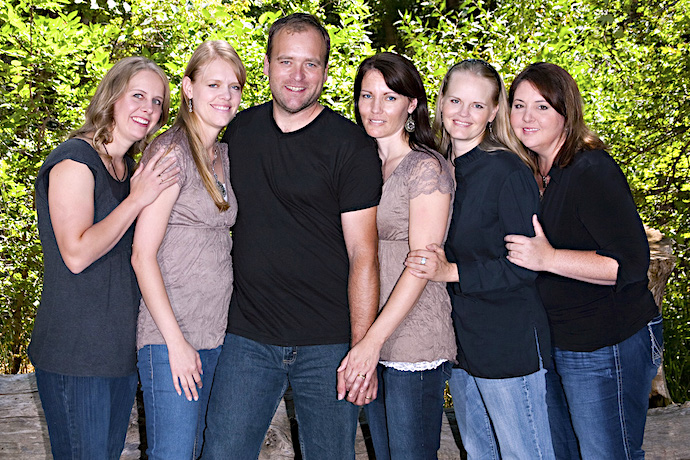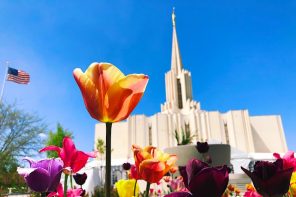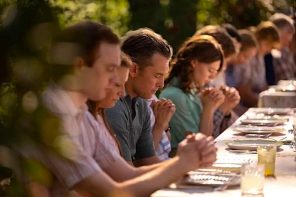Lynn A. Thompson, President of the Priesthood of the Apostolic United Brethren, the largest Mormon fundamentalist religion, quietly passed away this week on October 5, 2021.
‘Mormon fundamentalist religion’ is a term used by both early leaders of the movement and leaders within the LDS Church to differentiate themselves from those who continued the controversial marital practice. According to the Apostolic United Brethren, they were charged with continuing the “fundamentals” of the faith—namely polygamy—after the LDS Church essentially brought an end to the practice in 1904.
Over the past two years, the legal and criminal status of polygamy in the US has once again been at the center of public attention. At the start of the 2020 Utah legislative session, Senator Deidre Henderson and Representative Lowry Snow introduced a bill that sought to effectively decriminalize polygamy in Utah. SB102 reclassified the practice as an infraction for consenting adults, whereas polygamy associated with other crimes remains a felony.
The bill passed by an astronomical margin. At the center of the bill’s debate was harm reduction, and further integrating polygamous families into wider Utah society. Among supporters were several of Thompson’s children who left the faith as adults, and who recognized the criminal status of polygamy as contributing to a childhood marked by isolation, even within a more “progressive” fundamentalist movement.
While Mormon fundamentalism is most often associated with the Fundamentalist Church of Jesus Christ of Latter Day Saints (FLDS), led by Warren Jeffs, the AUB has demonstrated the diversity of practice within the movement. Members of the community have frequently appeared on television shows such as My Five Wives and Sister Wives. Their public presence has forced people to interrogate their previously held ideas about polygamous Mormons in the U.S.
Despite media attention over the last decade, the AUB has always been a marginalized and criminalized faith. Beginning in 1933, in the face of governmental prosecution and persecution from the Church of Jesus Christ of Latter-day Saints, polygamous Mormons sought a place of refuge to practice their faith. However, even in its earliest years, the polygamous Mormon movement was marked by schism.
In 1952, the fledgling polygamous Mormon community in Utah underwent a split. Those who were faithful to Joseph W. Musser looked to Rulon C. Allred as his successor and the new President of the Priesthood. Under Allred, the faith grew. Most notably, the group experienced a growth in membership after the Church of Jesus Christ of Latter-day Saints desegregated their temples. Shortly after, the group officially incorporated as the Apostolic United Brethren (AUB). By 1970, the group had communities in Pinesdale, MT, as well as in Bluffdale and Rocky Ridge, UT.
When Allred died in 1977, he was succeeded by his brother, Owen Allred, followed by LaMoine Jenson, the man he appointed as his successor and who served as the leader of the community until 2014. Thompson assumed leadership of the group following Jenson’s death, bypassing more senior members of the priesthood organization.
Thompson’s leadership was not without controversy. In November 2014, Rosemary Williams accused Thomson of abuse. Thompson denied the allegations, but was only met with additional accusations of embezzlement and abuse.
With the passing of this controversial Mormon Prophet, the AUB once again raises the question of who is recognized as “Mormon” (if anyone is) and how polygamy contributed to the isolation that marks the AUB’s history. When LDS Church President Thomas S. Monson passed away in 2018, Latter-day Saints from across Utah visited the Conference Center at Temple Square to view their late prophet and pay their respects to his legacy. International leaders sent flowers that lined the Hall of Church Presidents, with Monson’s casket situated at the end of the room decorated with images of his predecessors.
Like Monson, Thompson was upheld as the man designated to lead the faithful, speak on behalf of the divine, and seal families together for eternity. However, with limited media recognition of the death, the religious community that surrounded him will continue relatively unnoticed in the public sphere. Given the continued prevalence of polygamy in Utah, and the legal questions surrounding the faith Thompson led, the recognition of diversity within the Mormon Restoration is more important than ever.





